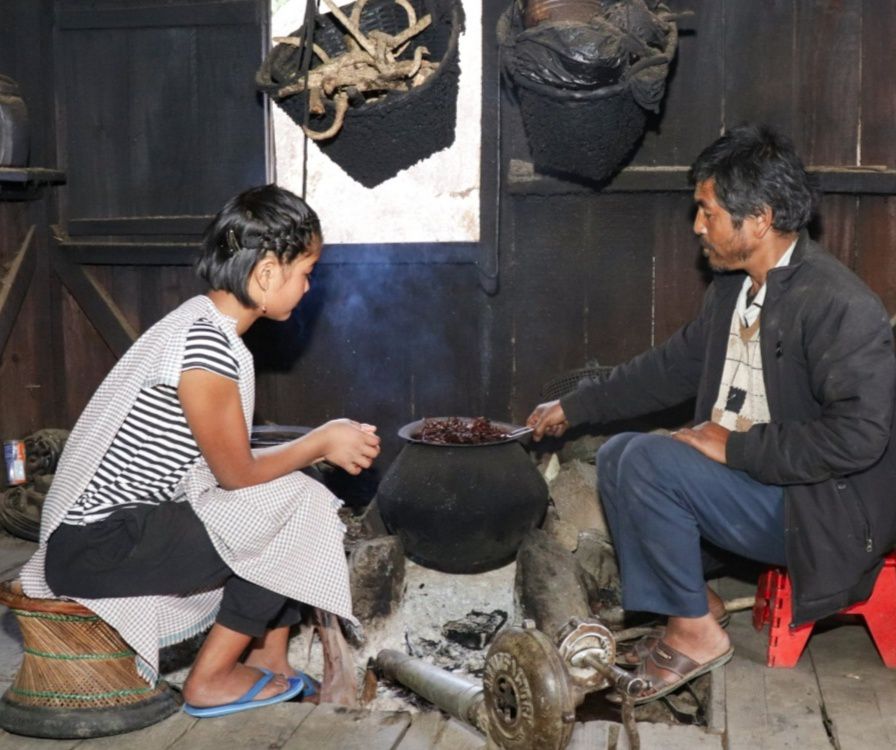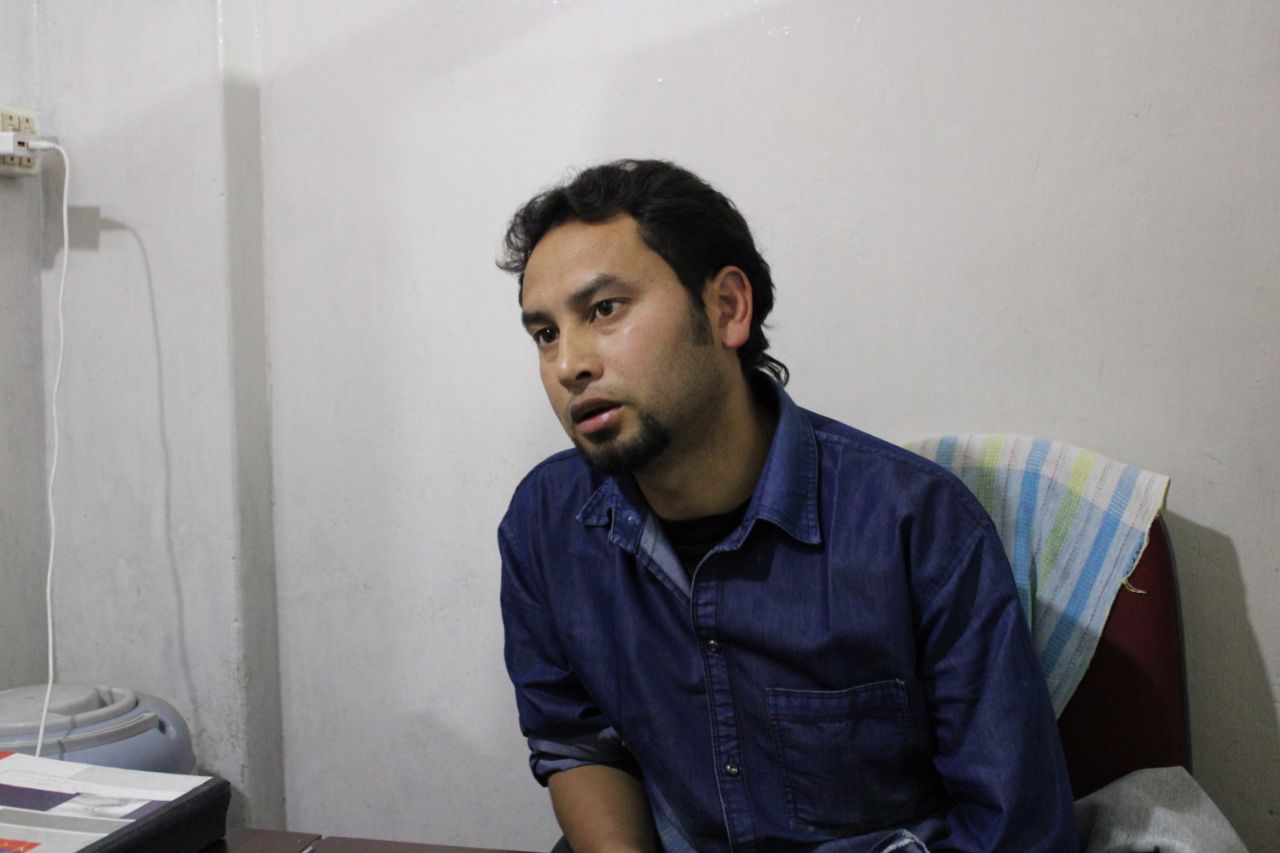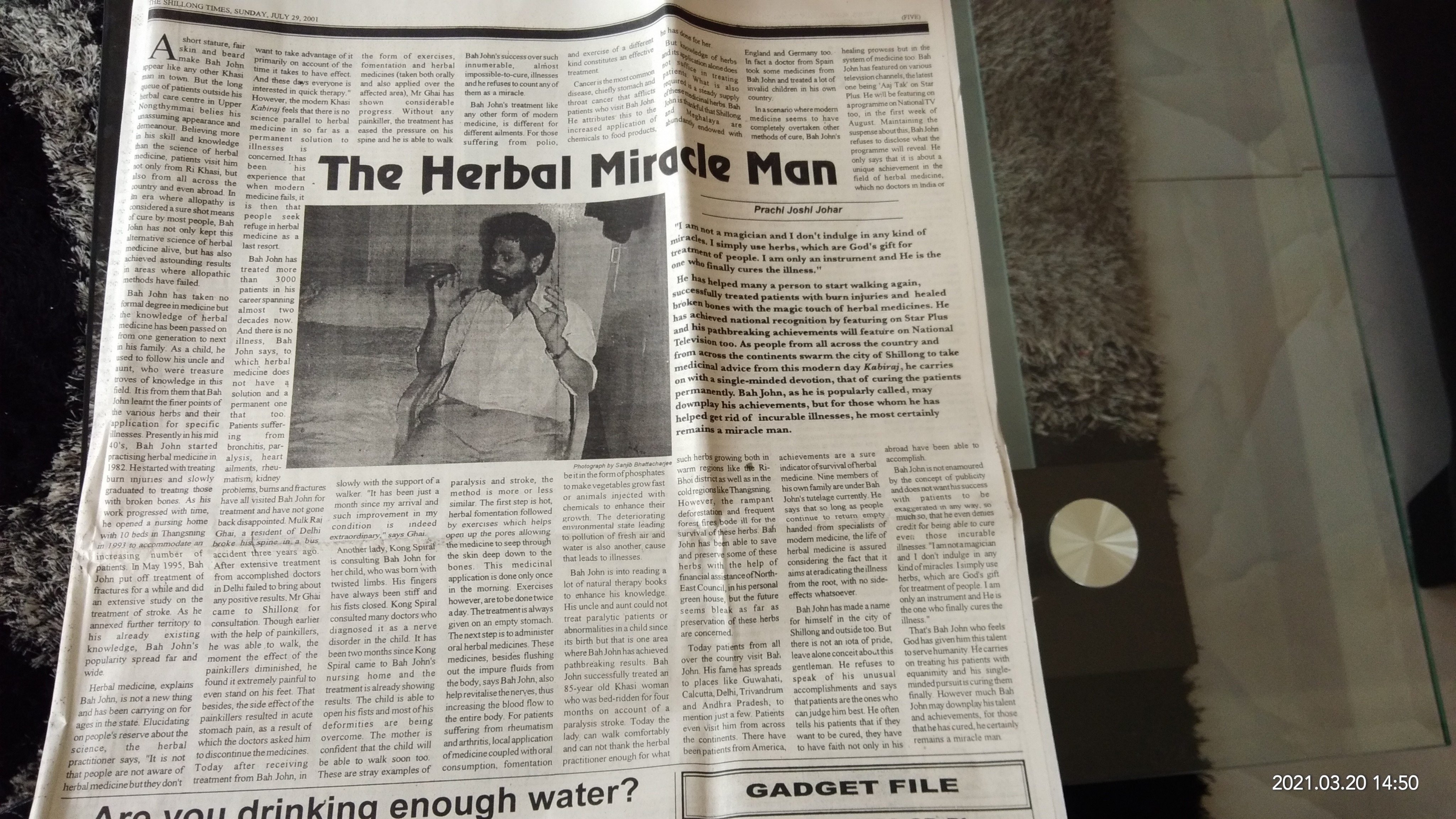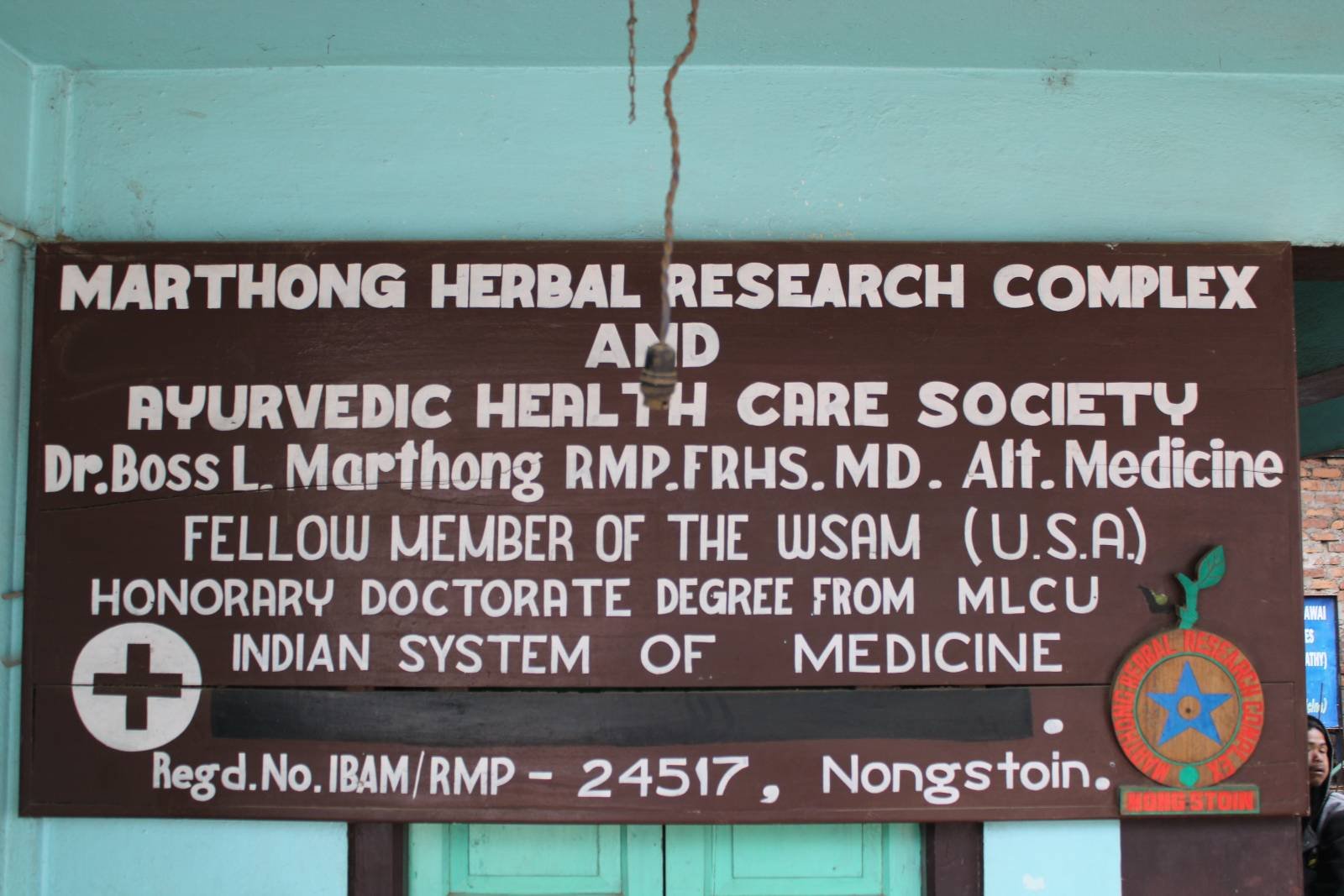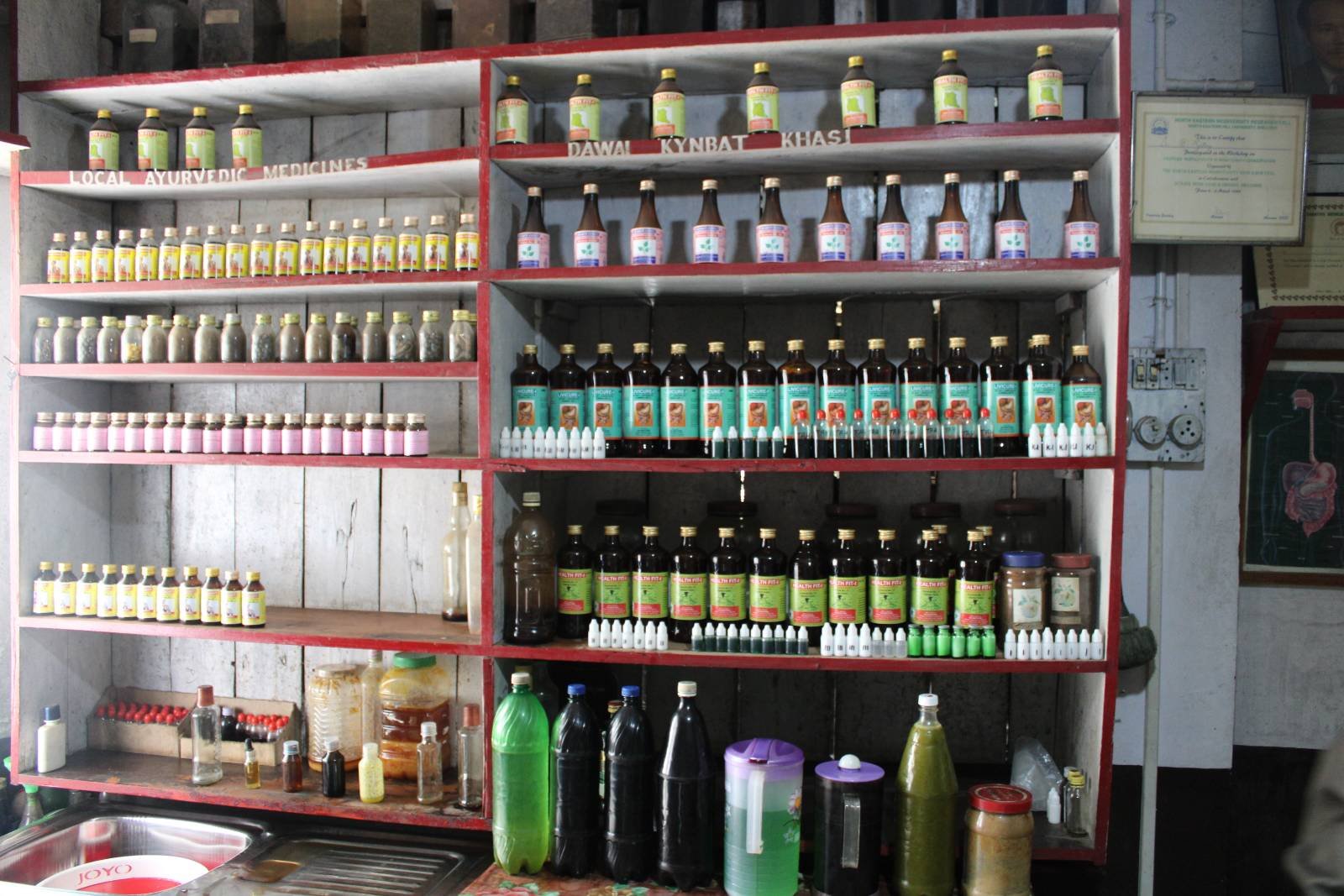Human Health
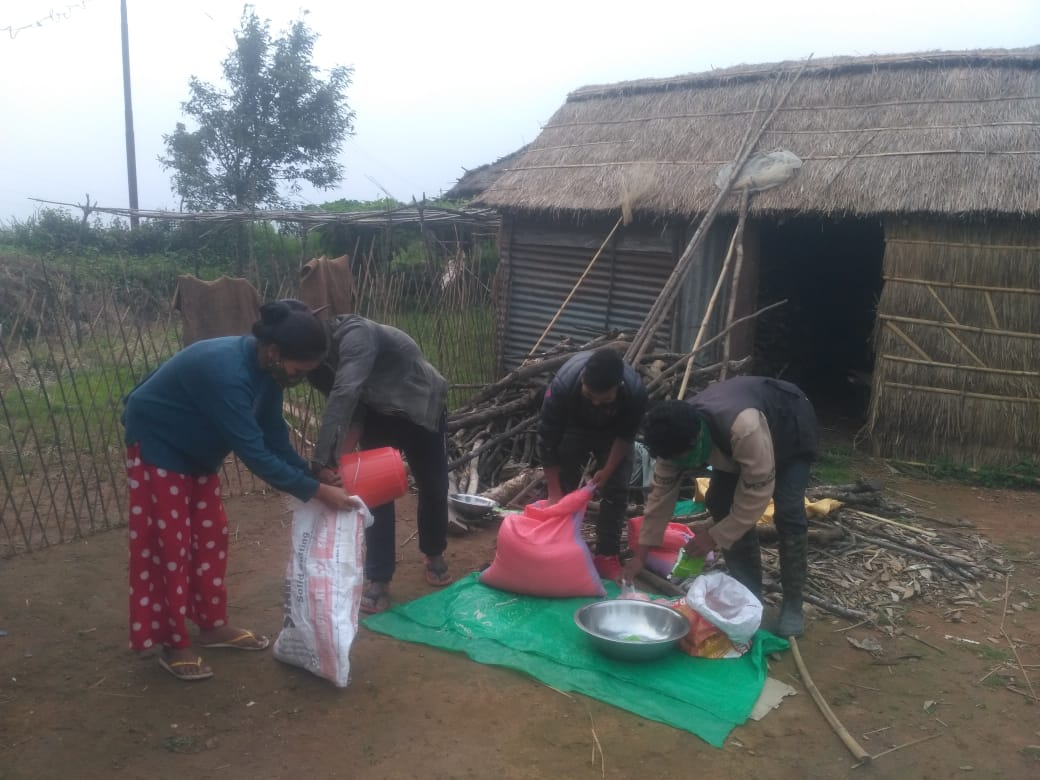
Cash Crop and Social Impact
Impacts from these changes in the landscape extend far beyond the ecosystem; they are transforming Khasi social relations as well. These include a shift from a collective spirit of mutual sharing and reciprocity to a modern form of contract relation with the land (Nongkynrih 2012). Before cash crops like broom grass were introduced, landless farmers would borrow land from their neighbors, and then repay the land-holders with some of the produce they harvested. But with the introduction of the cash-crop system, cultivators have started to pay rent in cash (Nongkynrih 2012). Nowadays, every available surface is transformed into this cash crop: Land previously protected as common property for growing bamboo near waterways is now being converted to broom grass (Nongkynrih 2012).
Cultivators are now dependent on money to support themselves and their families (Nongkynrih 2012). In the past, rural people planted their own food and did not need to buy it. With the broom grass cash-crop system, they are no longer able to plant their own food, and their livelihood has become dependent on the sale of broom grass (Nongkynrih 2012).
Mining
Meghalaya is endowed with a wealth of mineral deposits. As such, mining plays an important role in the economy of Meghalaya. However, mining in Meghalaya has increased the community’s vulnerability by impacting the local environment, exploiting residents through risky and illegal labor practices, and adversely impacting traditional livelihoods and human health (Karlsson 2011, Singh 2019). The lack of mining regulations in the state makes it a challenge to enforce labor rights (e.g., security, prohibitions on child labor, fair wages) and environmental regulations. Coal and limestone are two minerals that have been extensively extracted, but other rocks and minerals are also mined on a smaller scale, like stone and sand, sillimanite, granite, clay and kaolin, glass sand, quartz, feldspar, gypsum, iron ore, and bauxite (Singh 2019).
Meghalaya’s coal deposits are found across all three regions: Khasi Hills, Jaintia Hills, and Garo Hills. Coal mining in these regions employ a treacherous method known as “rat-hole mining.” ”Rat-hole mining” refers to the use of steep vertical pits which link up with narrow horizontal underground mining shafts. These shafts often cannot be navigated by adults, necessitating child labour. Mining is generally managed by the landowners who lease their land to miners who are overly reliant on these unregulated hazardous practices (Ibid). Reports of accidents and deaths are frequent. In December 2018, 15 miners died in a coal mining accident, and in January 2021, six miners died in another accident (The Print, 2021). The unregulated coal mines also impact miners’ health by not providing basic facilities (e.g., ventilation or safe drinking water) and exposing workers to hazardous conditions for long hours, which causes a range of physical and mental disabilities (Singh 2019). Moreover, coal mining has exacerbated deforestation, led to loss of biodiversity, and polluted waterways and groundwater.
Meanwhile, limestone in Meghalaya represents 9% of the country’s reserves (Ibid). It is found in the regions of Garo Hills, Jaintia Hills, and Khasi Hills. Most of the limestone is used in the manufacturing of cement by several companies that were granted mining leases by the state government (Singh 2019). But limestone mining also is done by landowners due to the land-holding system in Meghalaya (Singh 2019). Since the limestone in Meghalaya is used mainly to produce cement, cement plants were introduced in the state (Singh 2019). The methods employed in limestone mining are not industry-regulated(Ibid) and the mining does not benefit the overall community, instead just a few individuals reap profits (Karlsson 2011). In addition to not giving back to the community, it also impacts the environment, and is therefore responsible for a reduction in forest cover, polluting the soil and water, causing soil erosion and water scarcity, and impacting limestone caves (Karlsson 2011, Singh 2019). According to land use studies, limestone and the cement plants are the principal mining responsible for forest loss in Meghalaya (Singh 2019). With such damage to the limestone caves, Meghalaya might lose the possibility of alternative economic sources such as ecotourism. The excessive limestone extraction might cause an irreversible impact on these caves which can also be critical to the use of the caves for a more sustainable economic practice: ecotourism (Karlsson 2011).
While the mining industry has generated wealth and employment opportunities in some communities, it has also brought social disparity to the mining regions (Singh 2019). Additionally, the mining has benefited a small number of people, profits have not been invested in the local community (e.g., funding education and health, providing fair wages and safe labor practices, or regenerating degraded mining areas), it has disturbed the social and cultural identity of Indigenous communities, and it has led to increased use of alcohol, drugs, and prostitution (Singh 2019). Moreover, since mining is not regulated and the local practices are unscientific, it has negatively impacted the environment. These negative influences have spilled over and now impede the livelihood of communities that are dependent of the forestland, e.g. for traditional medicine (Singh 2019). Further, mining has significantly reduced forest cover and has contributed to the loss of biodiversity, has impacted traditional agriculture and community health by polluting the waterways and the soil, and has increased social disparity in the communities (Singh 2019). In all of these ways, mining activities have radically transformed the landscape and the range of livelihood choices available to local communities.
Health Equity: Equal or Unequal?
Community Health Centres (CHC) serve as district hospitals that offer surgery and more specialized medicine. They are staffed by regular doctors and 4 specialists. Primary Health Centres (PHC) offer the initial point of contact between SubCentres in rural communities and the rural villages themselves. PHCs are equipped to provide basic medical treatment through the general practitioner, but do not offer specialized treatment. SubCentres primarily offer referral services and can help facilitate treatment in district-level CHCs.
| Medical Infrastructure in Meghalaya | Details | Total (in State) |
|---|---|---|
| Community Health Centres (CHC) | Community Health Centres serve as district hospitals that offer surgery and more specialized medicine. They are staffed by regular doctors and 4 specialists. | 30 |
| Primary Health Centres (PHC) | PHCs offer the first point of contact between rural villages and SubCentres; they are usually staffed by one doctor. | 110 |
| SubCentres (SC) | SubCentres (SCs) do not offer medical care; but refer people to the nearest PHC. They are staffed by one chowkidar (security staff). | 450 |
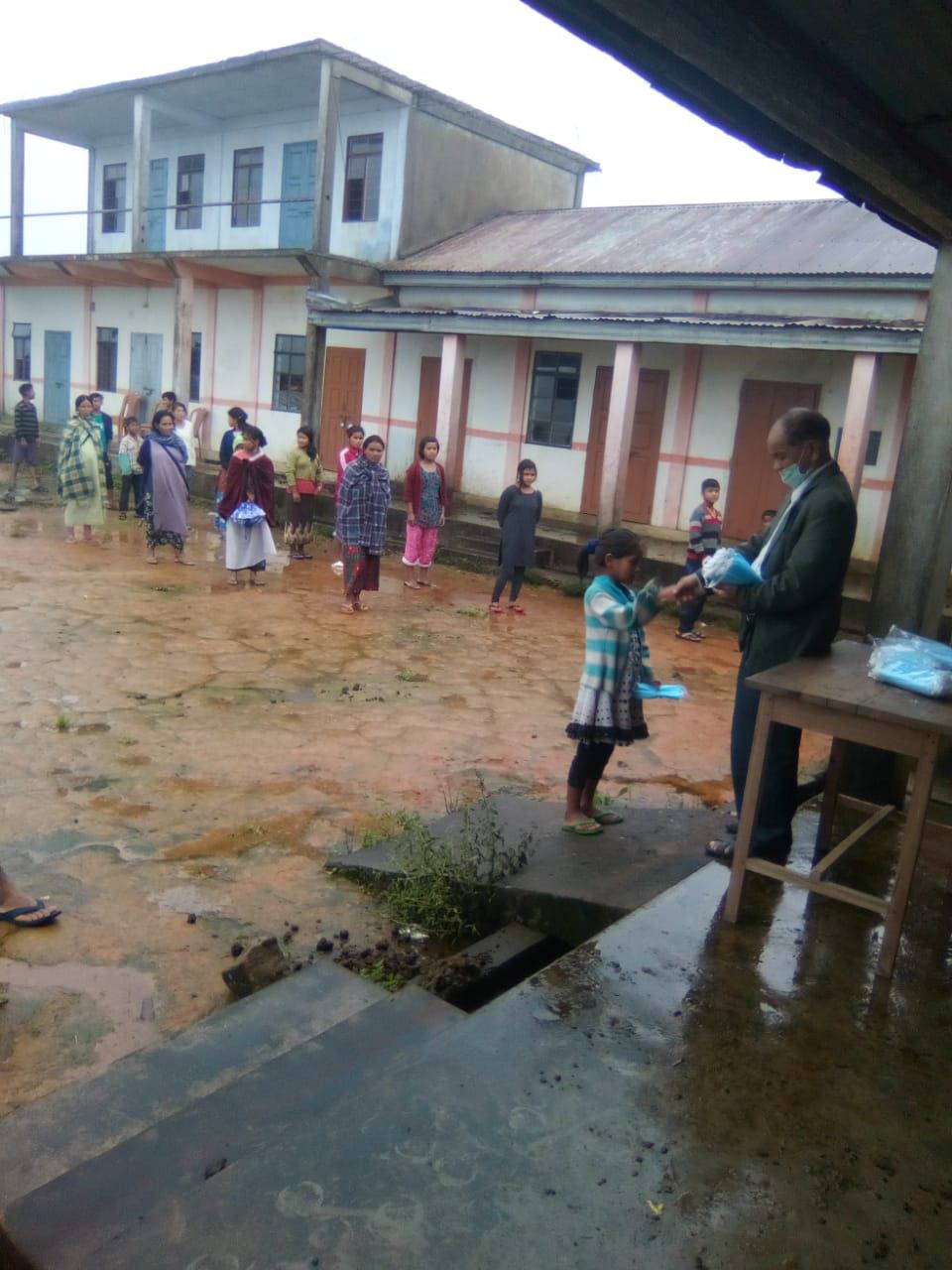
Pandemic Response & Health Equity
When COVID-19 began to spread across India, our team was quite worried about how it would impact Indigenous regions of Meghalaya. These medically under-served communities are already stressed by lack of medical infrastructure and medical staff under ordinary circumstances. They lack critical infrastructure such as hospitals, ICU wards, medical oxygen, and even doctors or nurses in many cases. How, then, would they be able to respond to the threat of a global pandemic?
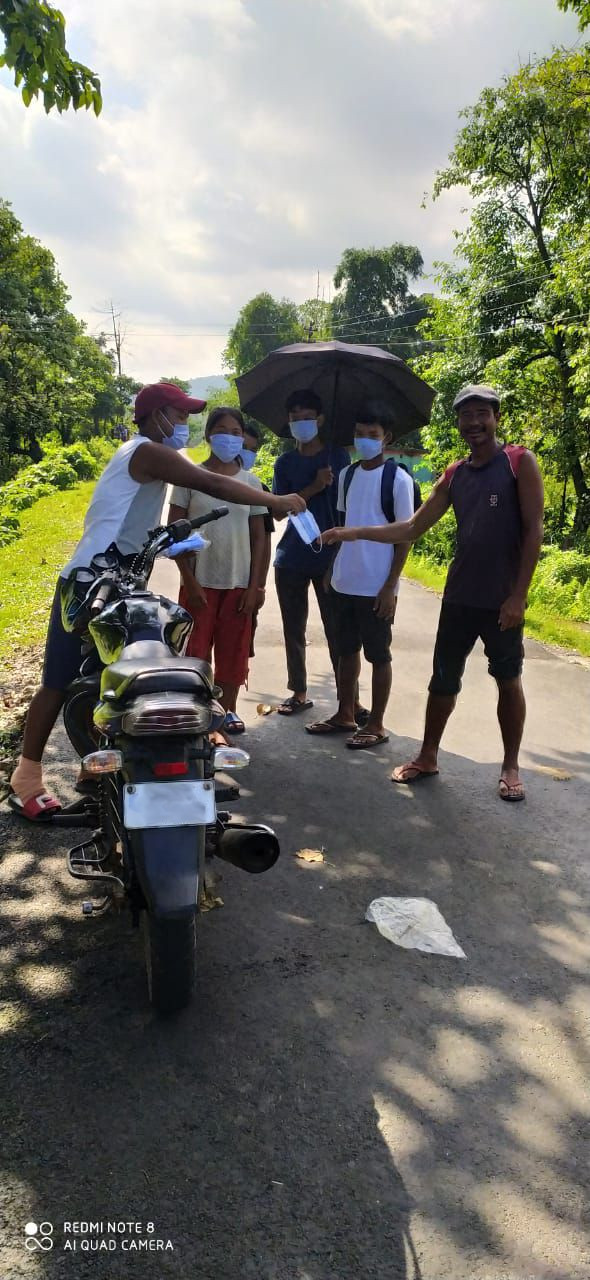
To help address these gaps, our team distributed roughly 5000 surgical masks and helped boost awareness of the risks and symptoms of COVID-19 by distributing Khasi language information about this new disease in Summer 2020, long before the emergence of new variants such as the Delta variant which devastated India during the second wave in Spring 2021. While the overall risk due to being a medical grey zone and lacking testing infrastructure was significant, our larger concern was the health care crisis that might be unleashed due to ripple effects from COVID-19. Because people in rural villages were anxious about potential health risks and due to extended government-imposed lockdowns impeding travel, rural dwellers were unable to travel to the urban centres for medical treatment from March 2020-early 2022.
These “ripple effects” impact communities in multiple ways: Those with chronic conditions were unable to obtain medical treatment or prescription medications for ongoing conditions, often due to the expense of transportation which rose due to social distancing requirements in shared cabs, making them inaccessible for most rural residents. Tragically, many villages witnessed a spike in “collateral deaths” – people who were unable to obtain medical care due to the inaccessibility of care in urban centres and who began dying from illnesses formerly managed by medicine and regular doctor visits. The above chart and map details distribution of clinics and allopathic (Western) medical services across the state. Fortunately, Indigenous Khasi have another system which helps fill in these gaps and in many cases is more effective in treating medical conditions than allopathic medicine: dawai khasi (traditional Khasi medicine).
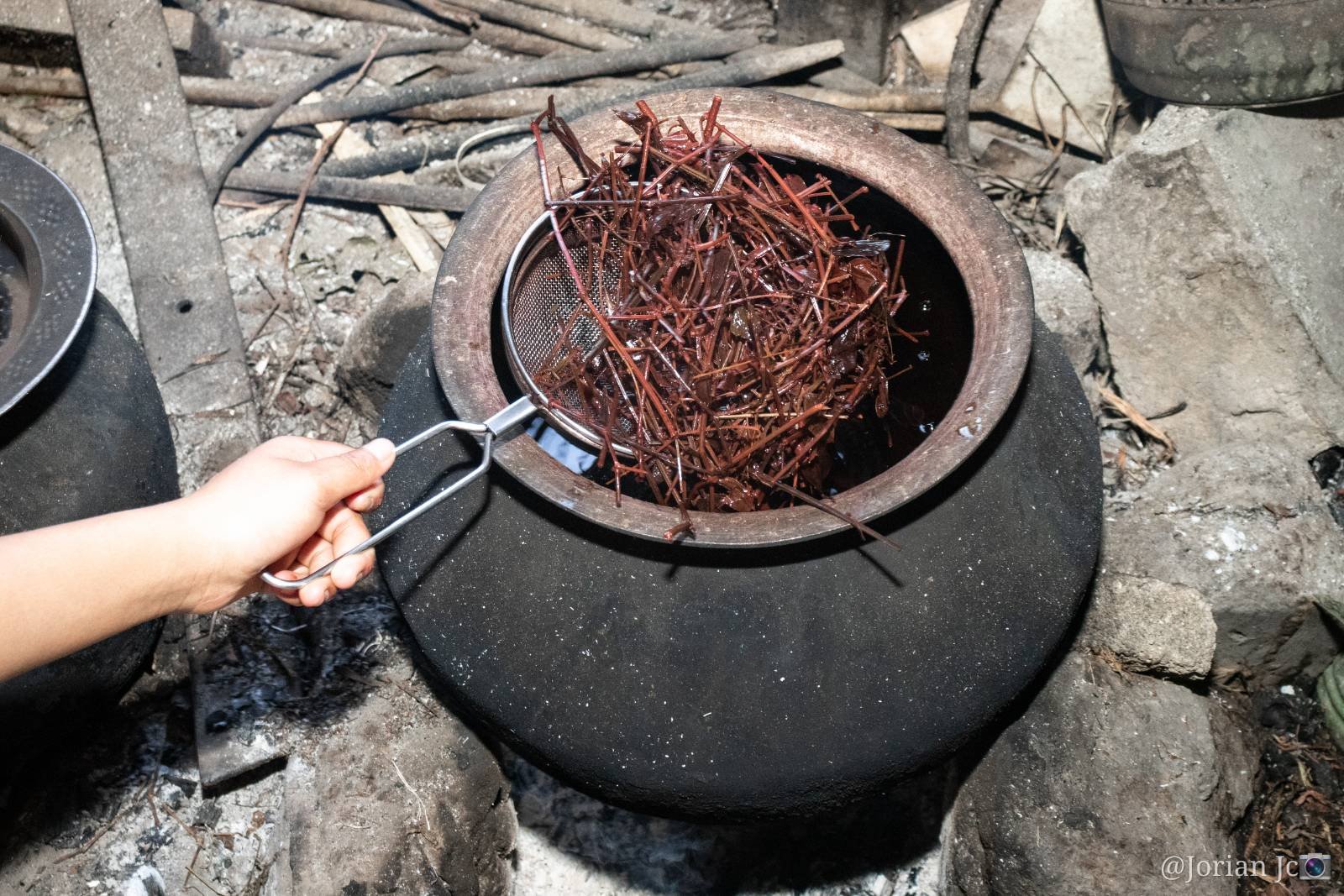
Due to the wide gaps and overall lack of allopathic medicine across the state, dawai khasi must play a central role in providing treatment to medically underserved regions, and to people who cannot afford the medical services of the larger hospitals, including surgery (Albert et al 2015). Still others seek out traditional herbalists and healers due to anxiety about surgical procedures, concern about the expense, a strong feeling of attachment to ancestral practices, and a lack of trust in allopathic medical practices. Khasi traditional healers (nongai dawai khasi) explained they are not able to utilize their skills to treat COVID-19, due to the newness of the disease and strict enforcement of a law prohibiting alternative medicines (ayurvedic/AYUSH, traditional, or other) from being deployed in treating COVID-19 across India. The healers we interviewed said they already have medicines regularly used to treat loss of taste, respiratory illness, and other symptoms. They are exercising caution and avoiding distributing these medicines due to the government’s crackdown on alternative therapies during the COVID pandemic, because of the massive spread of disinformation.
What the Healers Say
Paths towards healing
Traditional Healers
This project is based on a set of interviews conducted with four practicing dawai khasi healers. Their knowledge and insights are central to helping us understand how today’s Khasi communities utilize Traditional Ecological Knowledge systems (TEK) to cultivate and manage the forests for future Khasi healers and to ensure that biodiversity flourishes for future generations. But as we have described throughout this site, threats to forest health are real and continue to worsen.
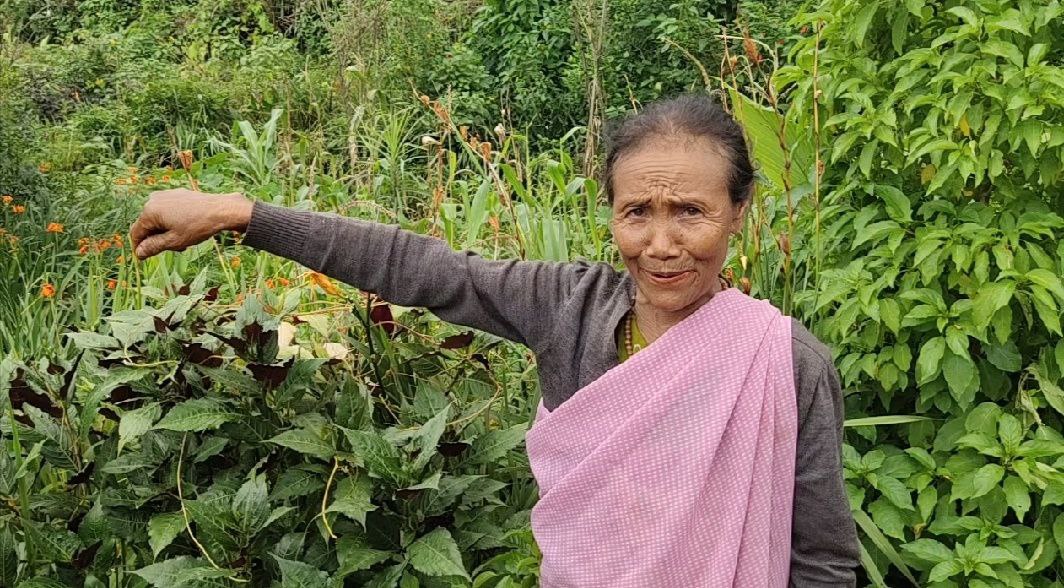
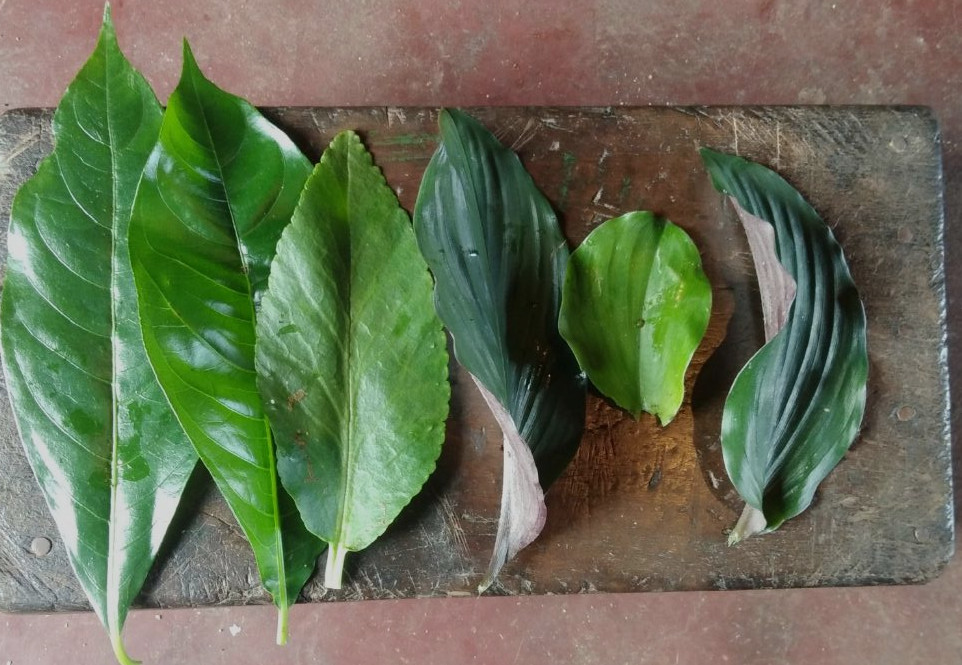

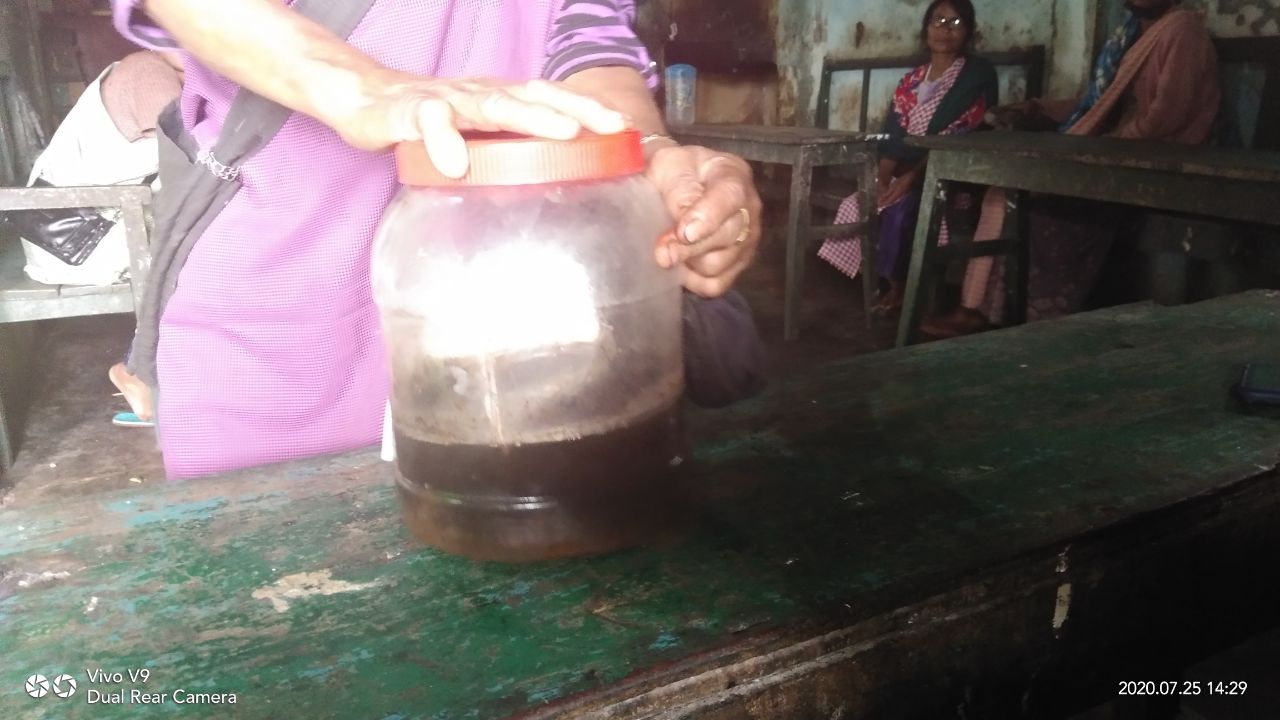
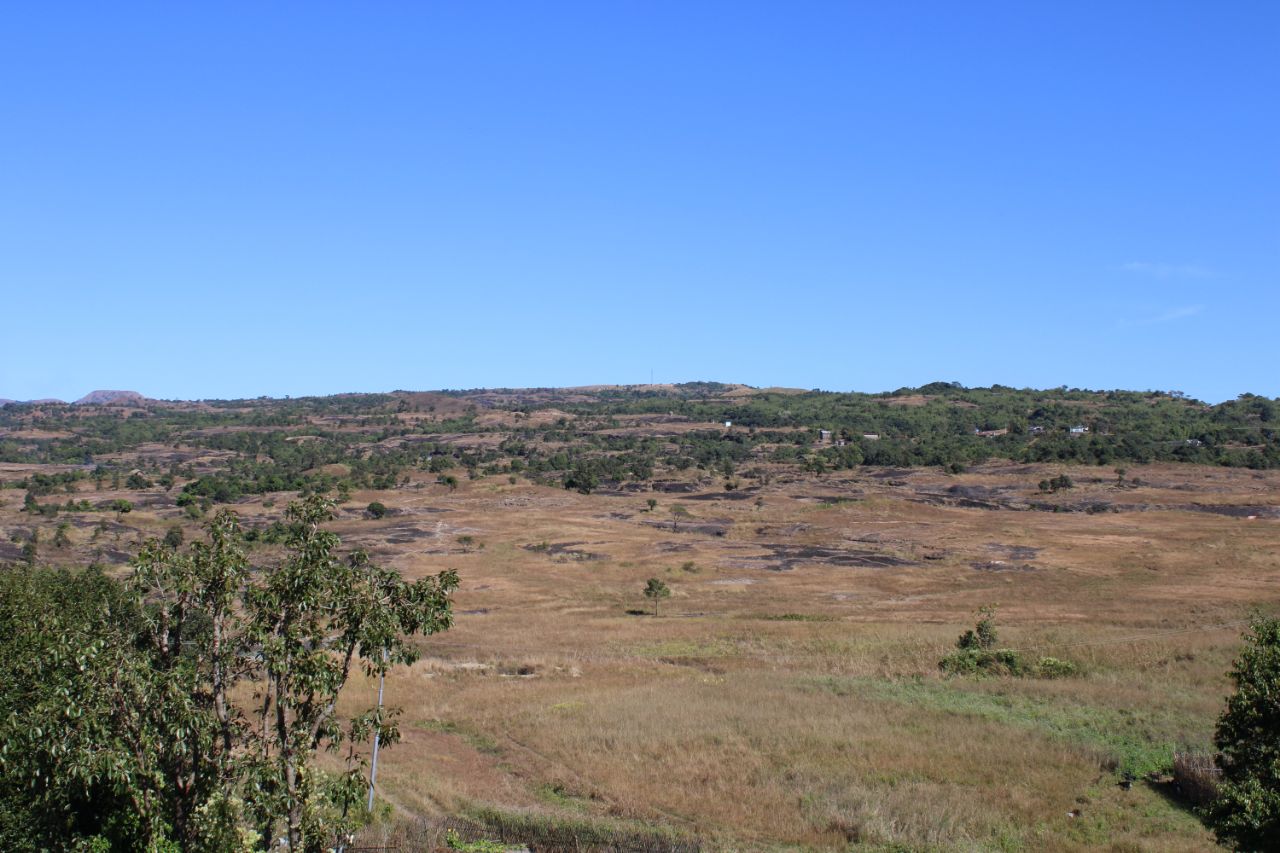
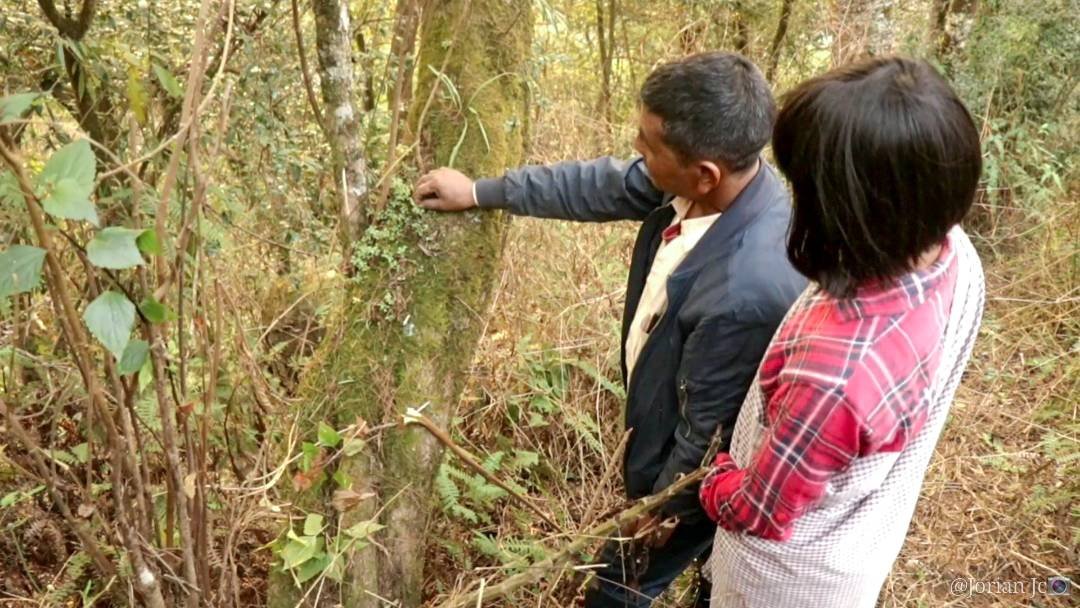
Khasi traditional healers approach these forests with deep humility and respect. Through training, they attain powerful medical skills and learn to treat different types of diseases using various medicinal plants and herbs. Among the many treatments, healers offer therapies for bone fractures, burns, skin diseases, food poisoning/stomach issues, dog and snake bites, malaria, jaundice, strokes, high-blood pressure, kidney stones, infertility, and muscular-skeletal problems, to name a few. Khasi healers do not train in western allopathic style medicine or undergo standard medical training, instead these traditional healers apprentice themselves with practitioners. Through an extended process of “learning by doing” and gathering the herbs and plant medicines in the forests, they develop the knowhow and capacity to treat various diseases using plant medicines that nature has provided.
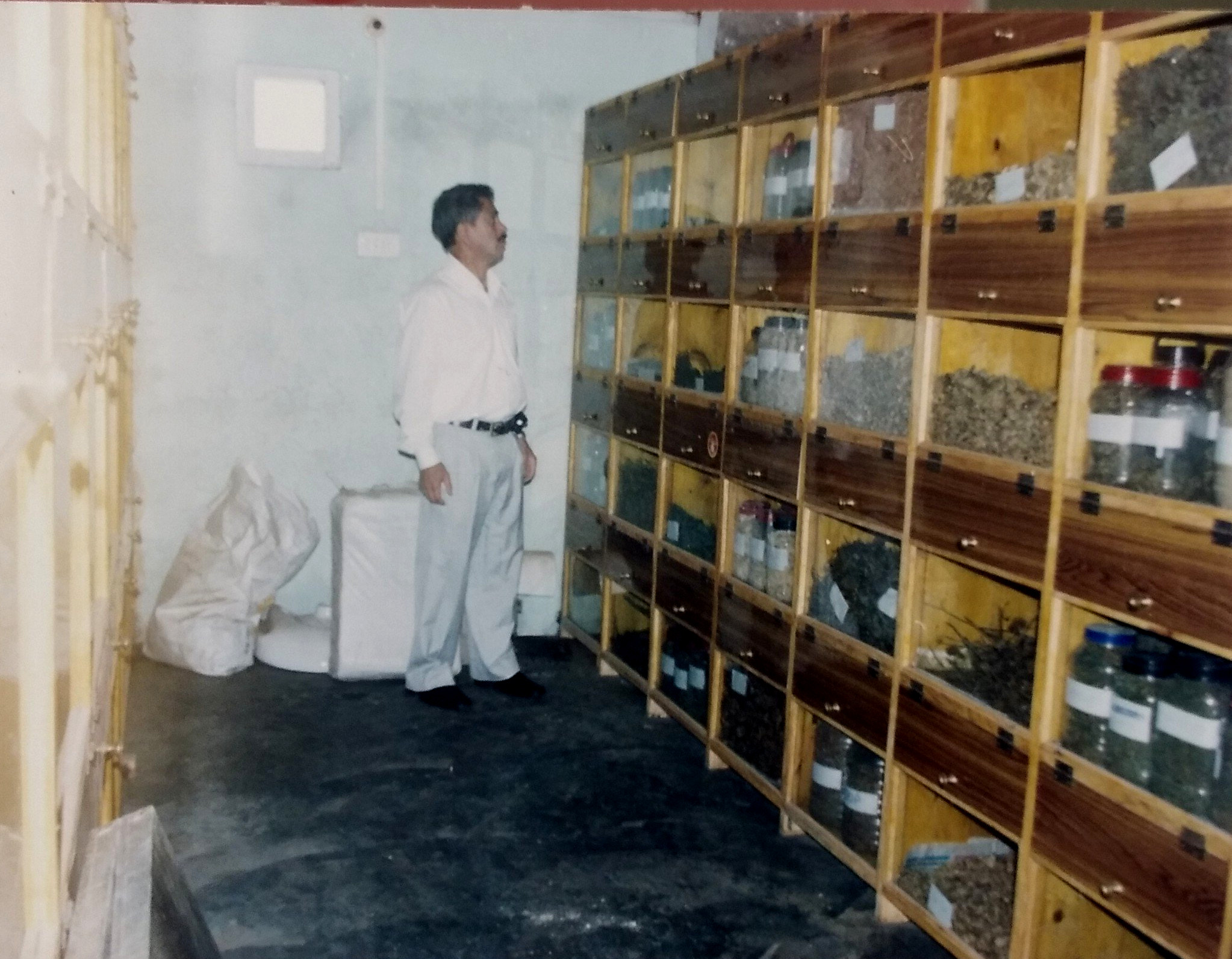
The Role of “Sap”
Khasi healers explained that their ability to serve others as healers depended on being born with a natural capacity for healing, known as “sap.” Together with apprenticeships and training under the guidance of practicing healers, the requisite ingredient to becoming a healer is “sap.” As Bah Donnie Kharumnuid defined it, “I believe God has given a talent to each one of us and it is up to us how we make use of it. If one knows how to use then it will be a blessing to those in need of it and to oneself. And if one ignores it the talent will be a waste.” Through rigorous training healing skills may be acquired, but those who do not possess “sap” will be unable to fully activate their learned skillset.
Bah Donnie Kharumnuid
On cultivating “Sap” as a healer
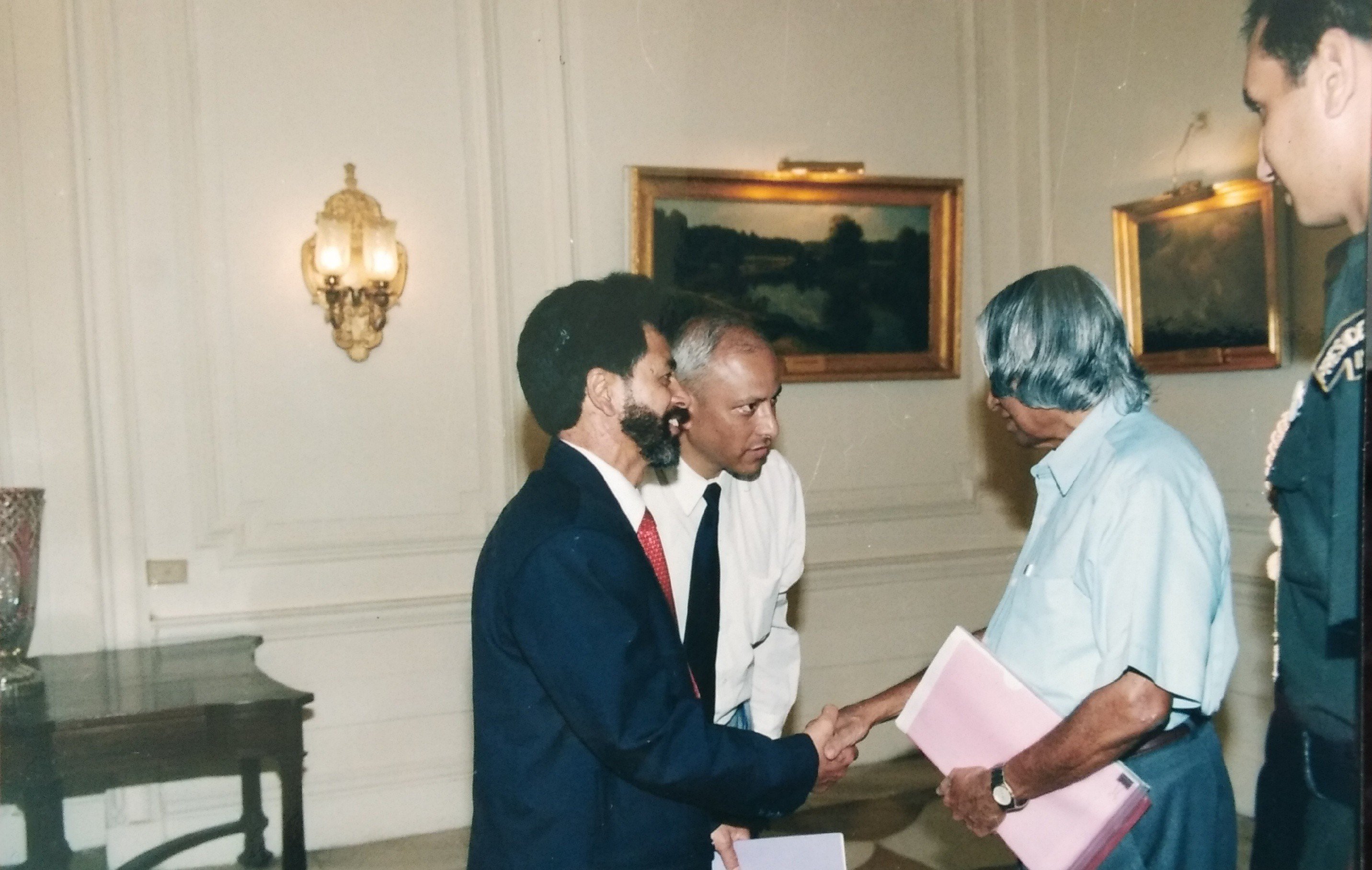
Relating to the Forest
Dr. John Kharduit (meeting with the President of India Dr. A.P.J. Kalam in June 2003)
“In the surface of this beautiful earth, God even in the emergence of this world did not neglect the human race in sadness and despair, but the loving God bestowed on this earth the different types of medicinal herbs so that mankind can use them for protection and cure from all types of diseases. There are different types of diseases and allopathy and homeopathy find it hard to cure a person completely... So for you and me who will preserve them in the natural environment and also to take these species from the forest and plant them in our well-cared gardens.”
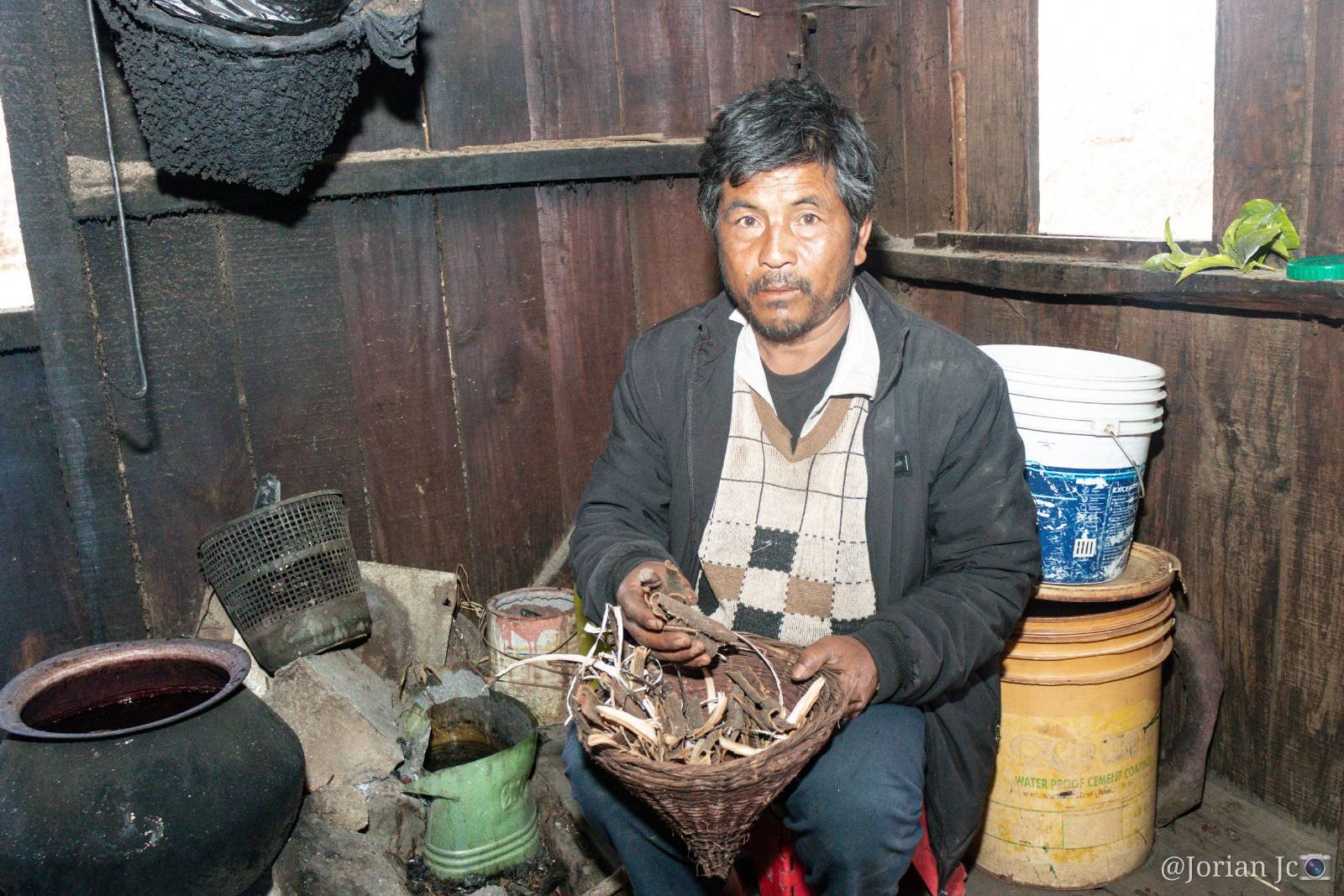
Bah Brodar Marshillong
“I remember in previous years there was a thick forest known as Law Lyngdoh Marshillong, and once a year our clan used to conduct rituals in this forest. During these rituals, any person who had bad intentions would not dare to go near this forest. Moreover, we could not destroy or even carry anything away from this grove. Even if we carried dead wood (kindling), we would be punished. We had to return the kindling or we would continue to be punished. There were also many animals in the forest. But we did not kill them because our elders had taught us not to destroy anything that nature has kept because it ensures that the forest is healthy and adds to its scenic beauty.”
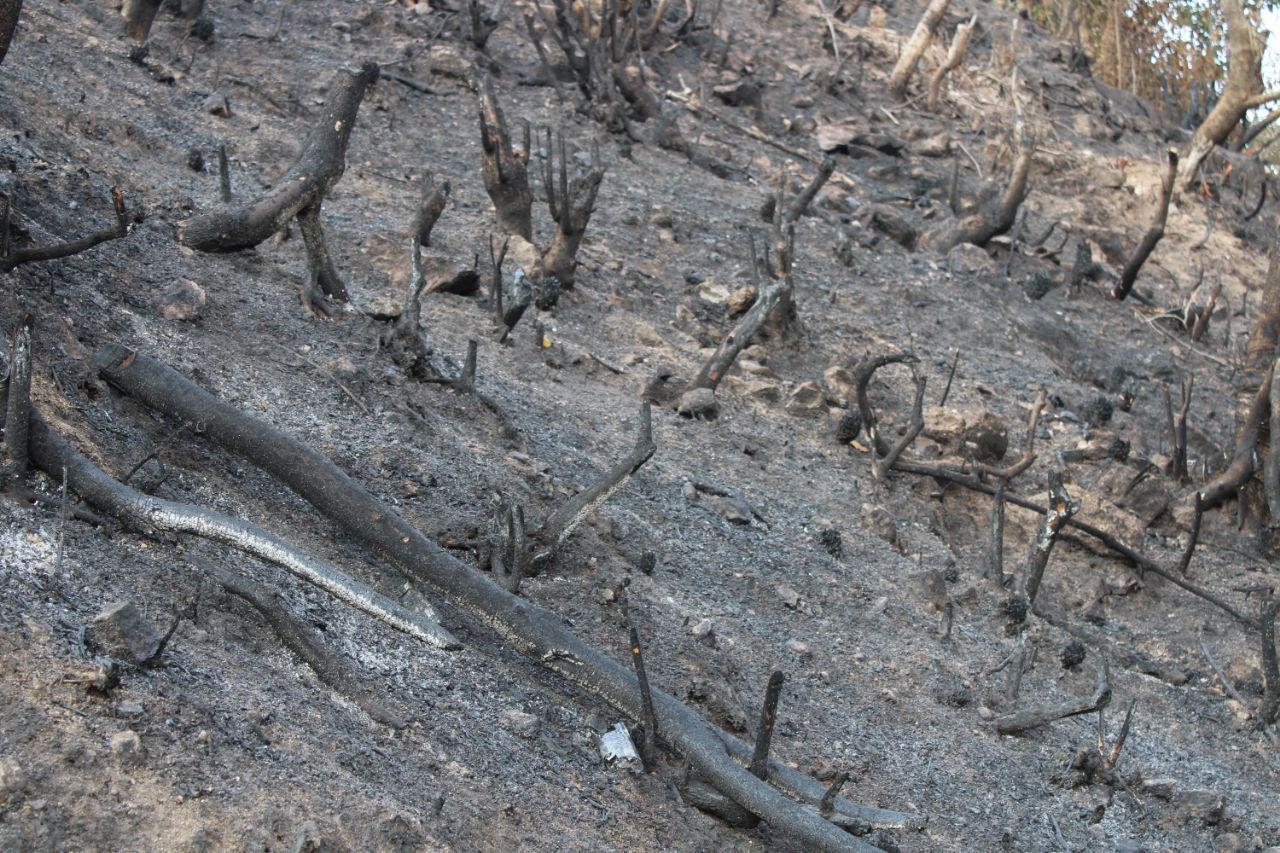
Dr. John Kharduit
“The jhum system (system of shifting cultivation), the fire in the forest, and the untimely felling of trees where these herbs grow or climb. All these have brought destruction and quickly made these herbs extinct from the surface of the earth. If the forests have been destroyed, the wind can blow so quickly without any obstruction and it can carry along with it dirty particles of the soil. The spraying of pesticides in the paddy fields or potato fields poisons the herbs that grow in the fields nearby and if any herbal practitioner plucks and use them, the juice of these herbs will bring harm to the person who drinks them. Once again I want to stress that we must preserve these herbs while there is still time and before they disappear from the surface of the earth.”

Survival of the Sacred Forests and Clan Groves
Kong Kladis Paliar
“Ecosystem change is a big problem. In our place, deforestation, mining activities, and broom grass cultivation has seriously impacted the growth of medicinal plants. Nowadays, due to various human activities and interferences, it takes a lot of time for me to find any medicinal herbs. At times I felt that even if I walked a hundred hills and crossed as many rivers I would not even find a single medicinal herb. So now there is the pressure even for those of us who know these medicines well, we cannot find them, because they are not present everywhere. And climate change and environmental loss are making it harder and harder to find these medicines that we depend on.”
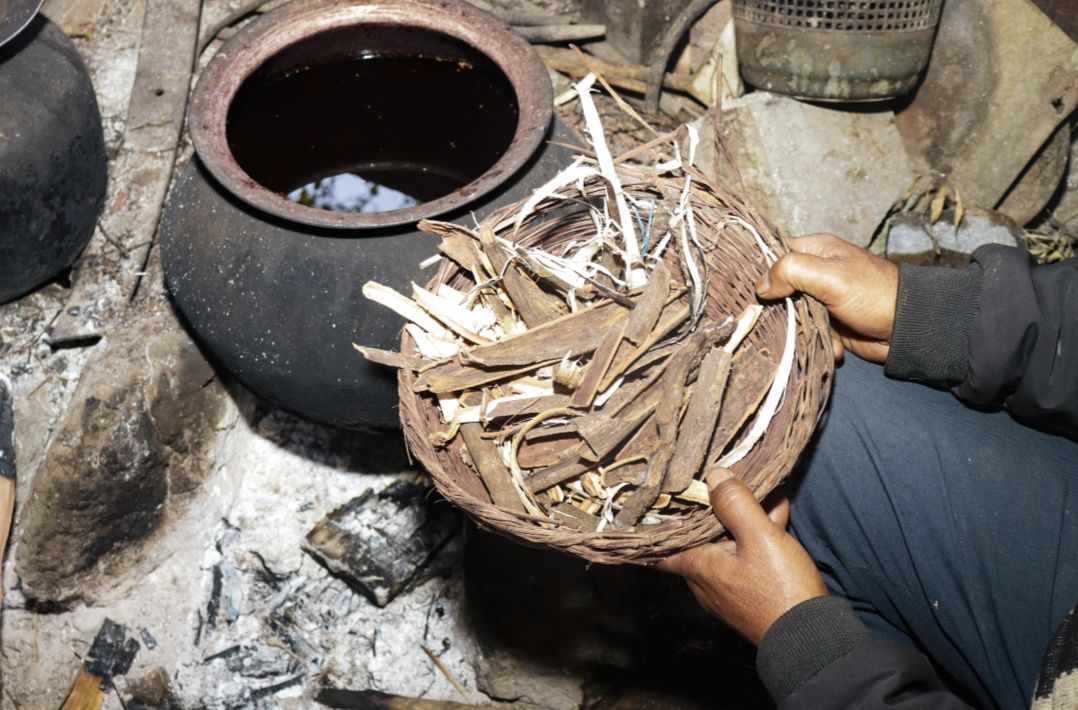
Bah Brodar Marshillong
“Sadly, our clan’s sacred forest was completely destroyed when I was 14/15 years old. In those olden days there were many medicinal herbs and plants in the grove which I used for various kinds of medical treatments. Before the grove’s destruction, it was very easy to find medicinal plants and herbs. But now because the sacred groves are being destroyed it has been a great loss for us healers. In previous years only one hour was sufficient to collect the medicinal plants and herbs we need for a week, but now even the plants and herbs we collect in one day are not sufficient to use for a week.”
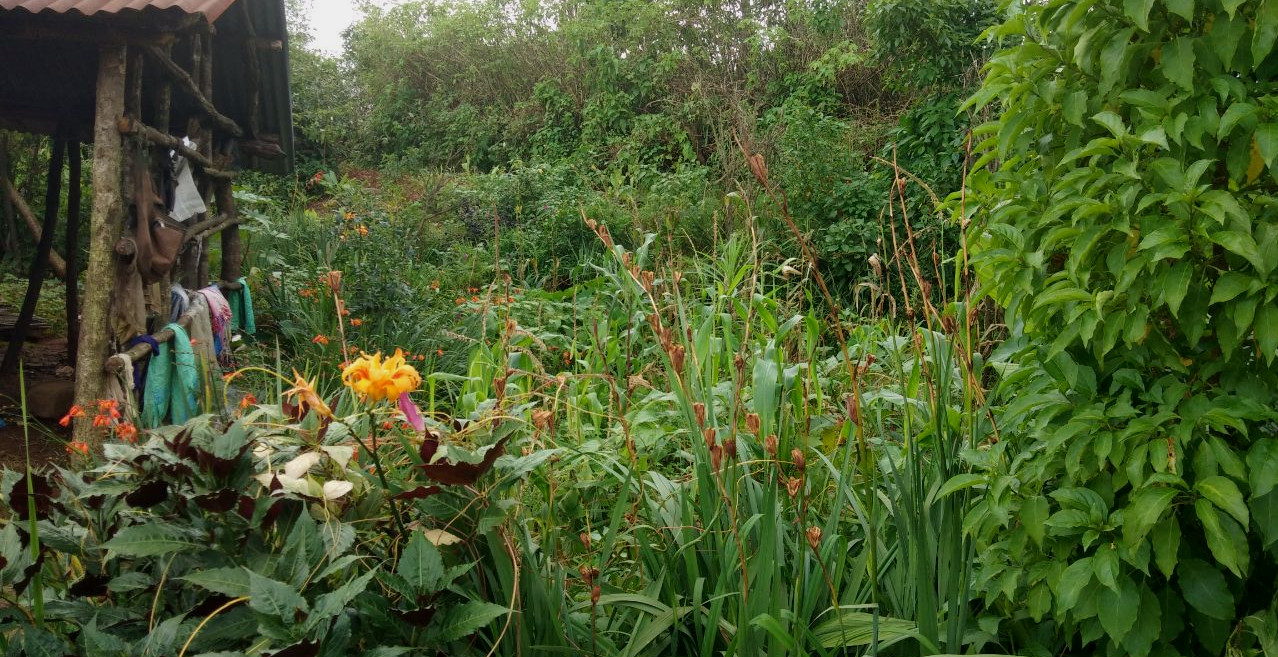
Kong Kladis Paliar
“During the last 45 years, I have cultivated 200 plants in the forests but now all are extinct. Among these plants, none of them can be grown in our home gardens, these 200 plants must be grown in the wild. Because I am getting older, I tried to plant many medicines in my home garden and to leave them for the future generations, but some must be left in the forests.”
Kong Kladis Paliar
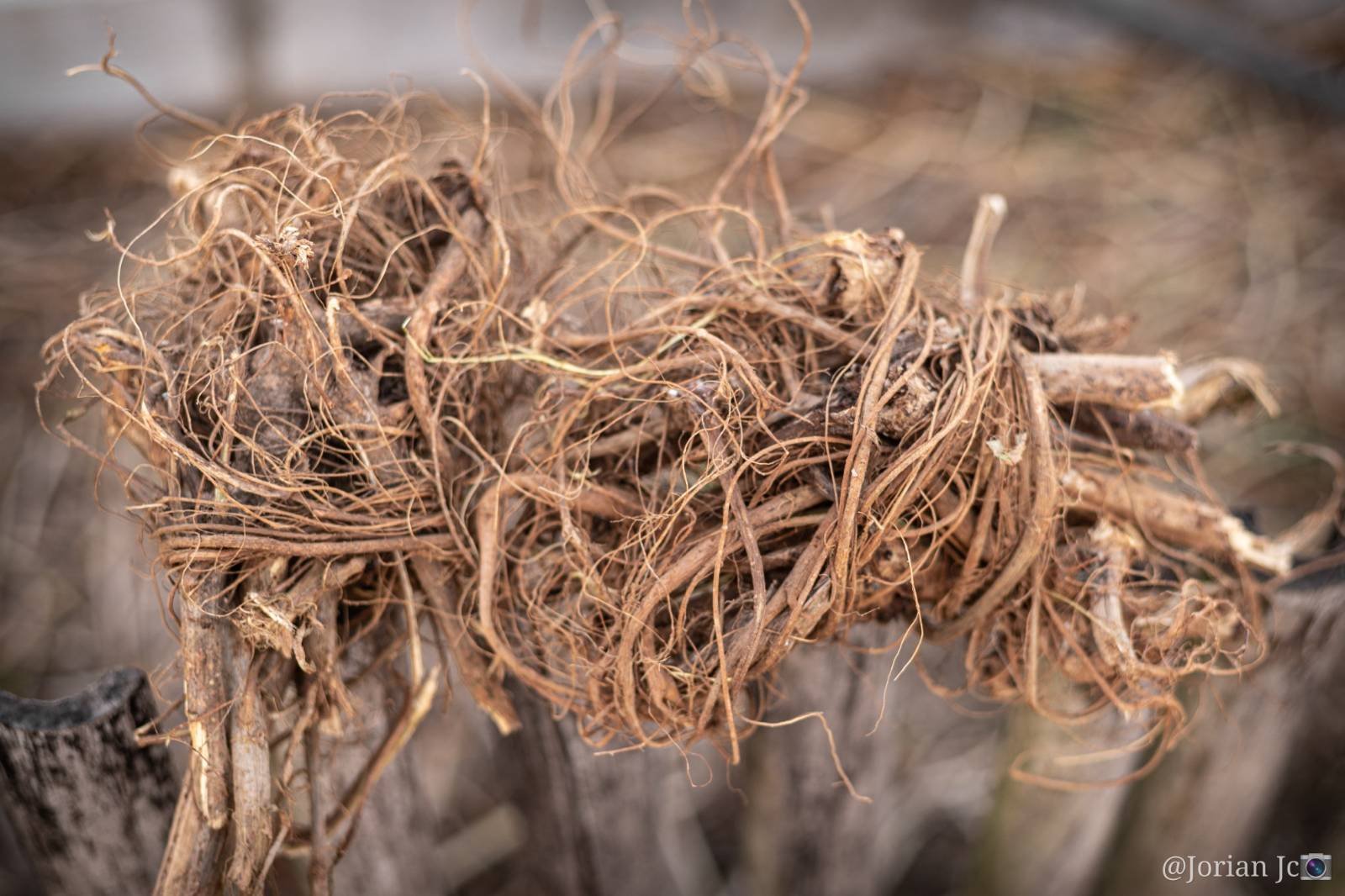
Bah Donnie
“Having the government appeal to the masses not to set fires and preventing deforestation is important. I also appeal to the public to stop forest fires because these forested areas contain lots of medicinal herbs which provide a blessing to others. The government should enforce the laws to protect and preserve the forest.”
Dr. Boss
“Presently, there are problems in collecting dawai kynbat (khasi medicinal plants) as compared to previous years. Now there is competition in the market, because even people from mainland India have come to purchase Khasi Hills’ medicines to supply to Ayurvedic companies in mainland India. Many of these mainland Indians try to cut down the whole tree right from the roots instead of cutting the kynbat only from the top of the tree. In this way many medicinal herbs are endangered and some have even gone extinct. I am not sure whether the government will collect any tax from the harvesting of these medicines by outsiders. Today the market is offering huge amounts of money to suppliers and many sell them on the black market. In the coming years it will be very difficult to stock these medicines because now many outside companies know about dawai khasi and they are offering a high price to the suppliers.”
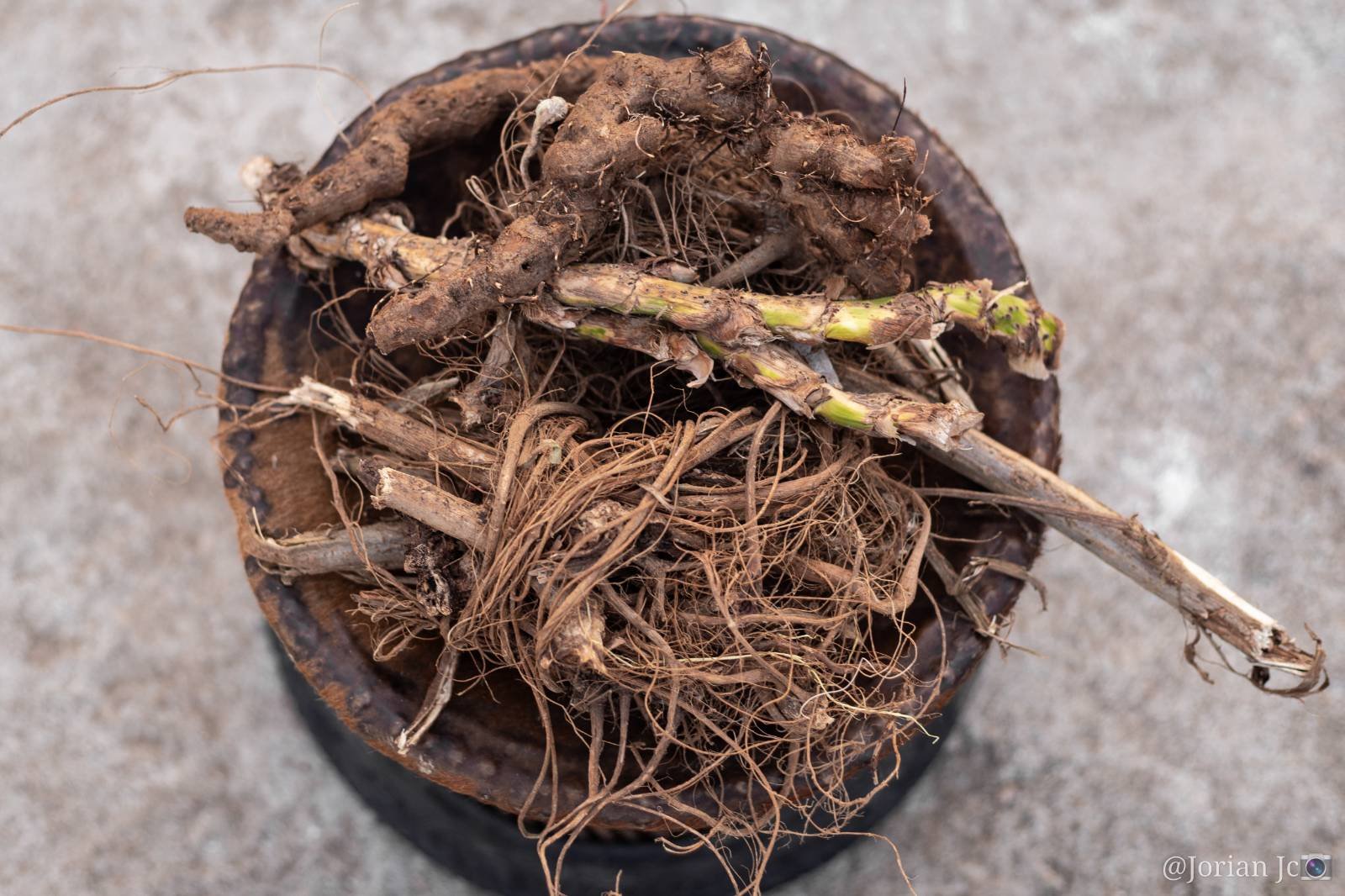
Kong Kladis
“It is urgent to put a stop to the cutting down of trees, burning of charcoal, broom cultivation, coal mining, and especially to stop supplying dawai kynbat to dkhar companies (mainland Indian companies). Because these companies buy dawai khasi/kynbat at a cheap rate and later sell it at a very high price outside the State of Meghalaya.”
Dr. Boss Marthong
“As one example, one plant is Sohsieh bsieñ (in the Ginseng family). Mainland companies now offer this medicine for 1200 per kilogram [which is very high], and because they have been harvesting from the roots, this plant is now on the verge of extinction.”
Dr. Boss Marthong
On the problem of outsiders poaching from Khasi managed forests
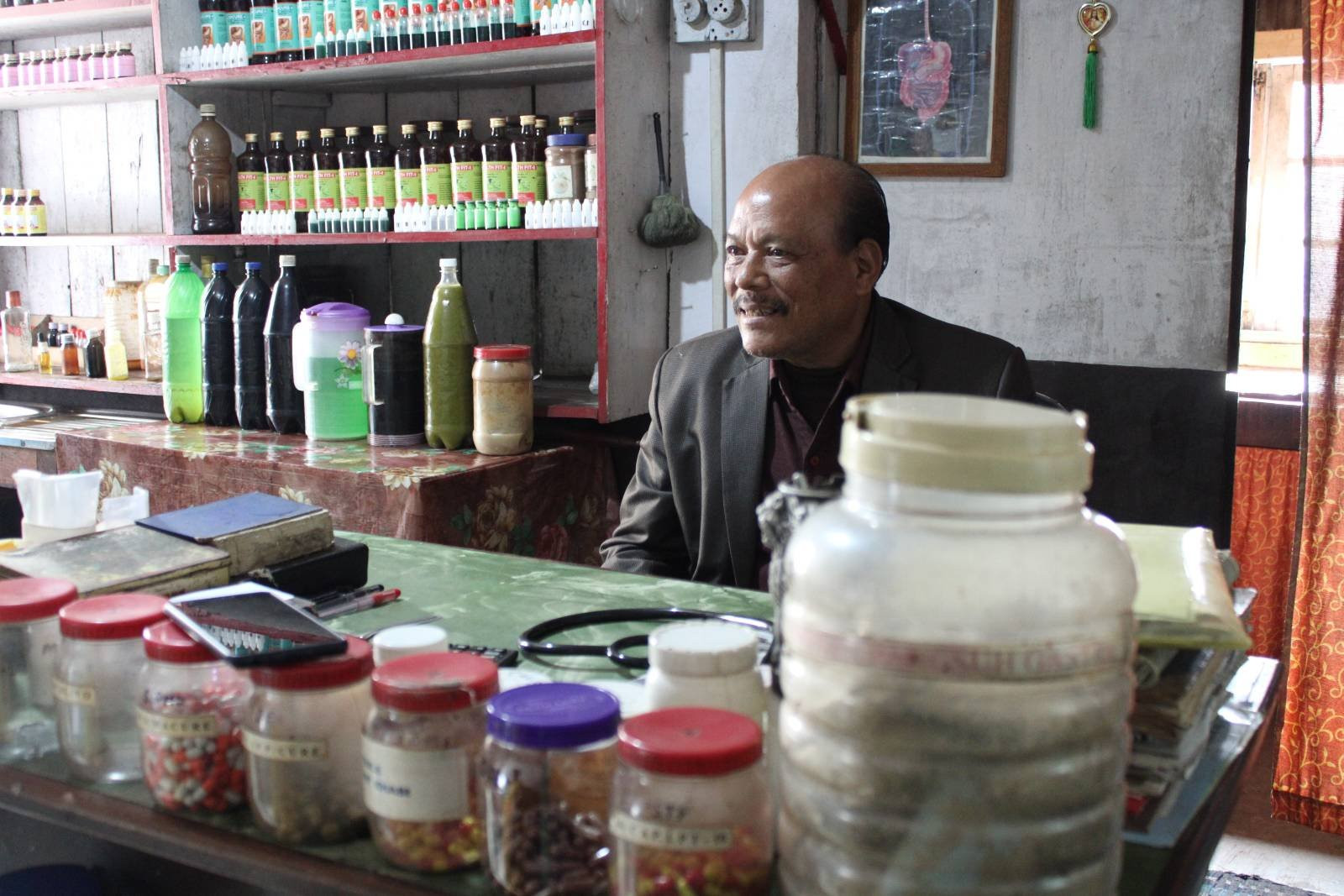
Forest Ecosystem and Medicinal Plant Health
Kong Kladis
“The strength of the dawai kynbat (plant medicines) that I grow in my gardens is very different from the strength of plants growing wild in the forest. Also there are kynbat that cannot be grown in gardens. Climate plays an important role because there are some medicinal plants that can only survive in colder areas and others that depend on a warmer climate.”
Bah Donnie
“Actually, some herbs have already gone extinct. Over time there has been a change in temperature, now it is becoming warmer, rainfall is being reduced and soil conditions are also changing. Also, forest cover has been decreasing, too, and this affects the growth of herbs that require more shade to grow.”
Kong Kladis
“There are many plants that cannot be grown in home gardens. Certain plants can only thrive in areas where there are trees and moisture from the rocks. Also, the soil type in the garden is not suitable for certain types of plants, these plants need the conditions in the forest to survive. For this reason some plants have gone extinct because people don’t value the forest.”
